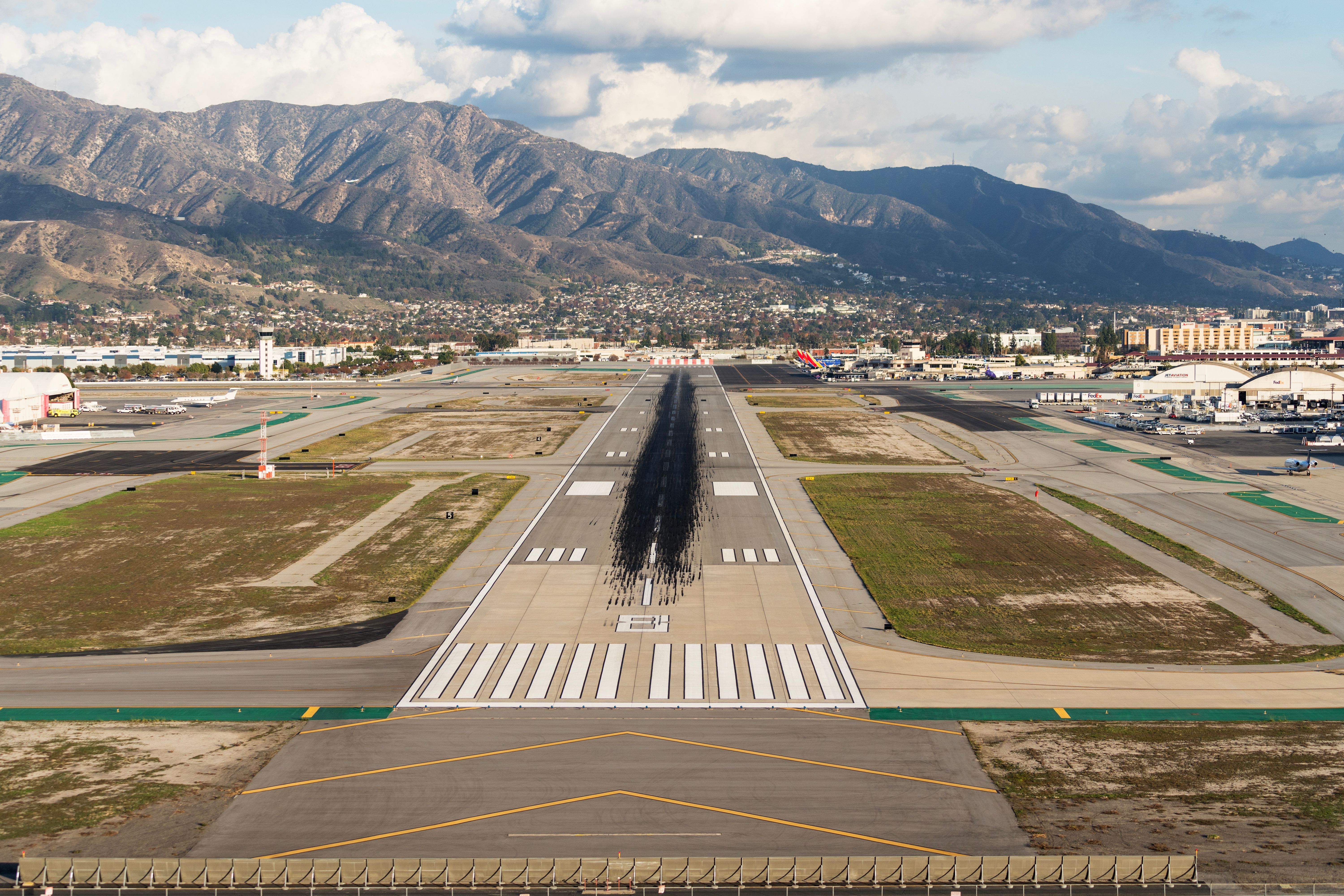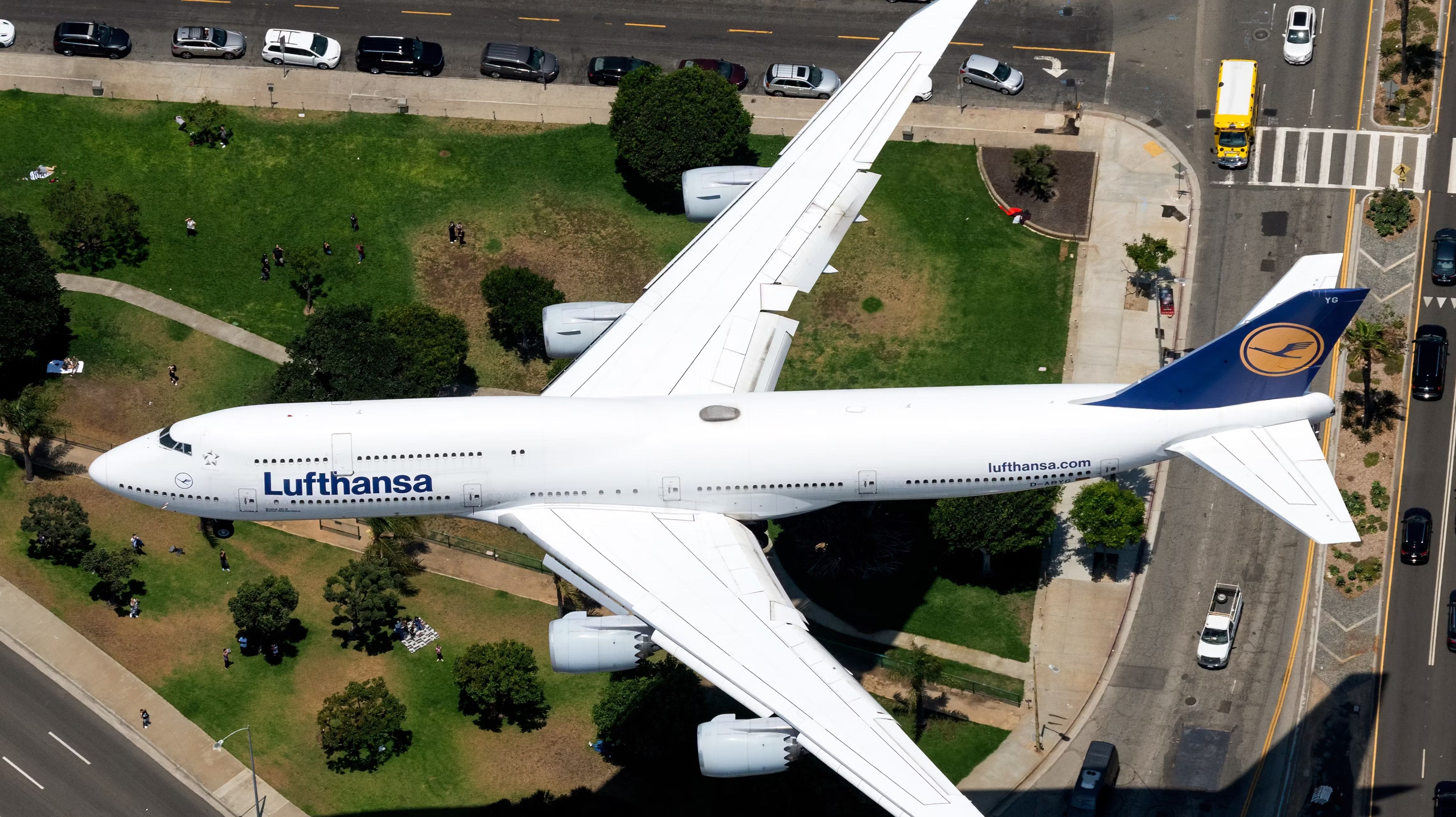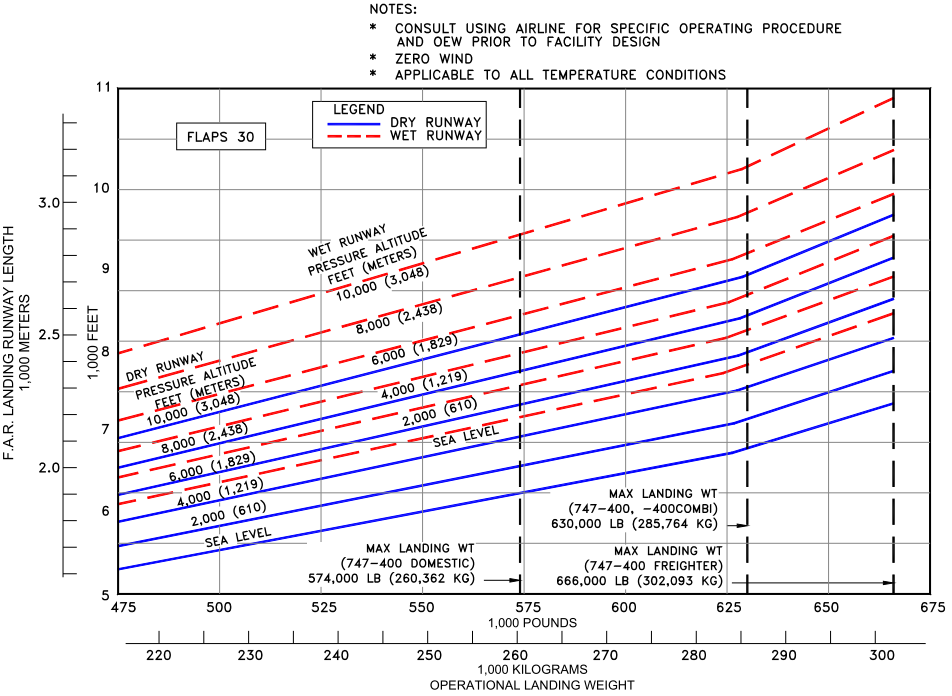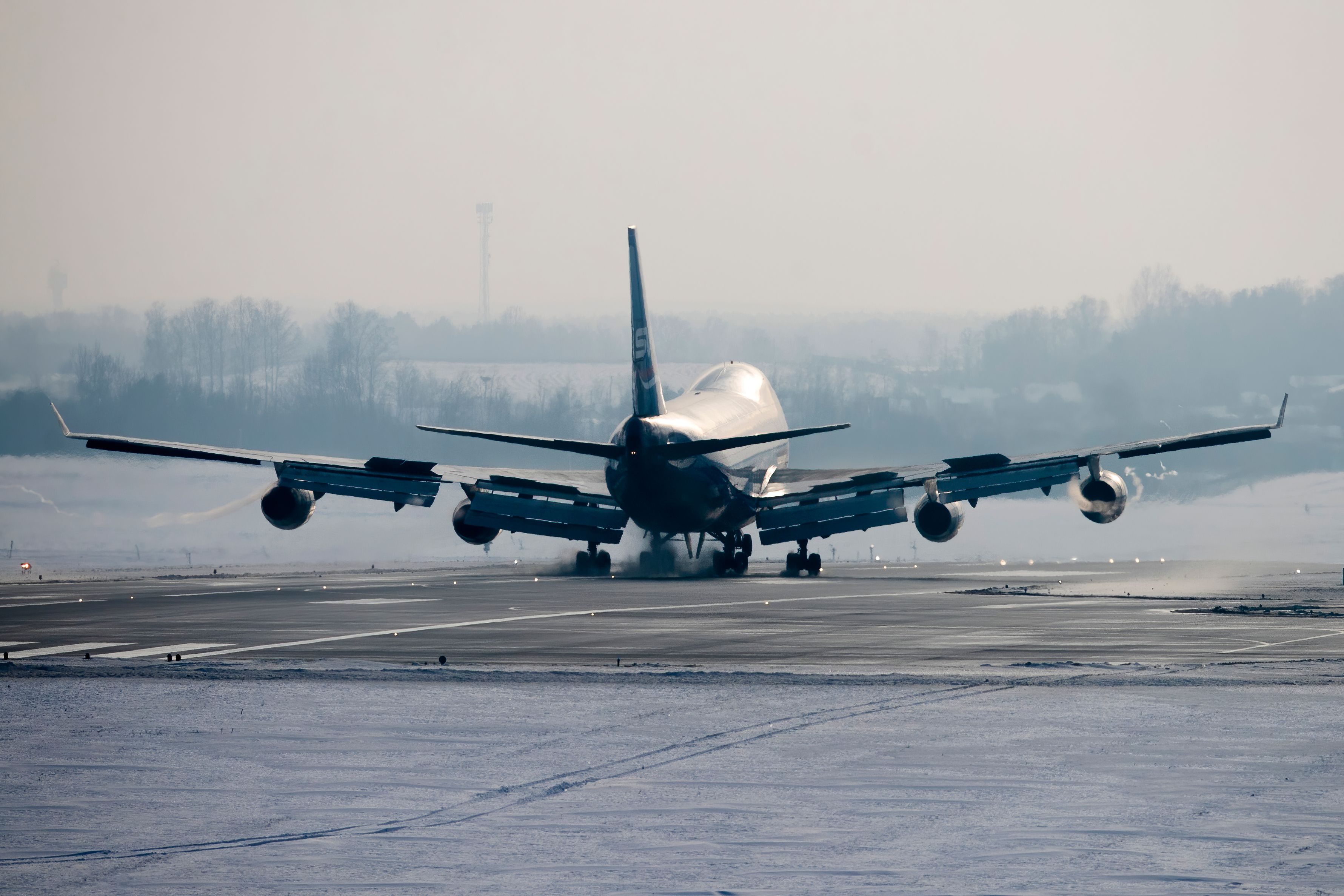Summary
- The minimum landing distance of a Boeing 747-400 is around 1,500 meters or roughly 5,000 feet.
- The larger and heavier Boeing 747-8 has been recorded landing with as little as 4,200 feet of runway.
- Many small airports have runways shorter than a kilometer, limiting aircraft types that can use them.
The Boeing 747 has continually experienced a gradual decline in popularity over the last couple of decades. Still, nonetheless, the jet once served as the linchpin of global commercial aviation for decades. Today, the plane still maintains a critical role in the world of air freight, as it delivers cargo across the globe.
The jet impressed cargo operators across the globe with its size and payload benefits over not just any other aircraft that came before it but also in comparison to other offerings of the time. However, its massive size and ability to carry vast amounts of weight come at a cost.
As one would expect, the Queen of the Skies is no nimble beast and requires quite the runway to achieve safe takeoffs and landings. However, in the event that the jet is forced to make an emergency landing, what would be the shortest acceptable runway length for such a landing?
The key factors to consider
Those with some knowledge of aviation will know that the minimum landing distance will depend on a long list of factors. Not at all specific to the Boeing 747 and applicable to all aircraft, factors include aircraft weight, wind, precipitation, runway conditions and characteristics, and altitude. The chart below provides a good visualization of this concept, which demonstrates the 747-400's landing runway length.
According to data shared by Flugzeuginfo.net, the empty weight of a 747-400 is 184,567 kg (406,900 lbs). Considering things like fuel, seats, passengers, crew, and freight present in an operational jumbo jet, we would certainly have to add a few thousand kilograms (or pounds) to this number, even in a best-case scenario.
Want answers to more key questions in aviation? Check out the rest of our guides here!
The chart notes that if a Boeing 747-400 had an operational landing weight of 475,000 lbs (215,456 kg) and wanted to land at a runway located at sea level, then the suggested runway length would be a little over 1,500 meters or roughly 5,000 feet. This length is approximately the same as London City Airport (LCY), although getting the jumbo jet back out would be another exciting scenario!
Naturally, the length required will vary between 747 models. After all, the short-fuselage 747SP has an empty weight that's almost 37,000 kg below the 747-400! Unsurprisingly, this model was ideal for carriers that wanted to operate the jumbo on short-haul routes and to smaller airports and, as a result, was rather popular with Japanese airlines.
What is the shortest distance recorded?
Interestingly enough, a pilot and contributor to Quora by the name of Ty Joseph notes that the larger and heavier Boeing 747-8 model has been recorded as having managed to land with even less distance. Joseph reports that, during cold weather and landing tests in Iqaluit, Canada, Boeing performed a test emergency landing using no more than 4,200 ft (1,280 meters) of the airport's runway.
The jet, he notes, was set with Flaps 30, and thrust reversers were set to 100% upon landing. Speed brakes were set to auto, auto brakes were engaged, and the pilot was manually braking as well. Additionally, with the excessive temperature of the brakes (thought to be over 700°C), a safety system was required in order to deflate the tires.
While it's a tangent to this article's main topic, it's interesting to note what is required when an aircraft lands on a runway that is generally too short for normal operations. In the case of an Ethiopian Airlines Boeing 767 that accidentally landed at the wrong airport, a successful takeoff was accomplished by leaving passengers on the ground and taking off with only the minimum amount of fuel.
Nonetheless, there are some Boeing 747s about which not all details have been made publicly available. For example, it could be highly probable that the modified Boeing 747-200s that serve as Air Force One might be able to take off from significantly shorter runways.
Runways can be much shorter for other aircraft
While we have established that the 747 can touch down on surprisingly short runways if required, many fall well below the type's limits. Indeed, small airports all over the world have runways of less than a kilometer in length, which severely restricts which aircraft can use them.

Which Major US Commercial Airports Have The Shortest Runways?
Exploring the shortest pieces of pavement used by airliners in the US.Operational restrictions on the 747 are not just limited to a required runway length. Gates must also be larger to accommodate the gigantic jet's wings. This requirement is one of the many reasons that Boeing installed folding wingtips on the upcoming Boeing 777X.
Are you surprised by the minimum distance required? Did you think it was shorter than this, or perhaps longer? Let us know your thoughts on the matter by leaving a comment!




